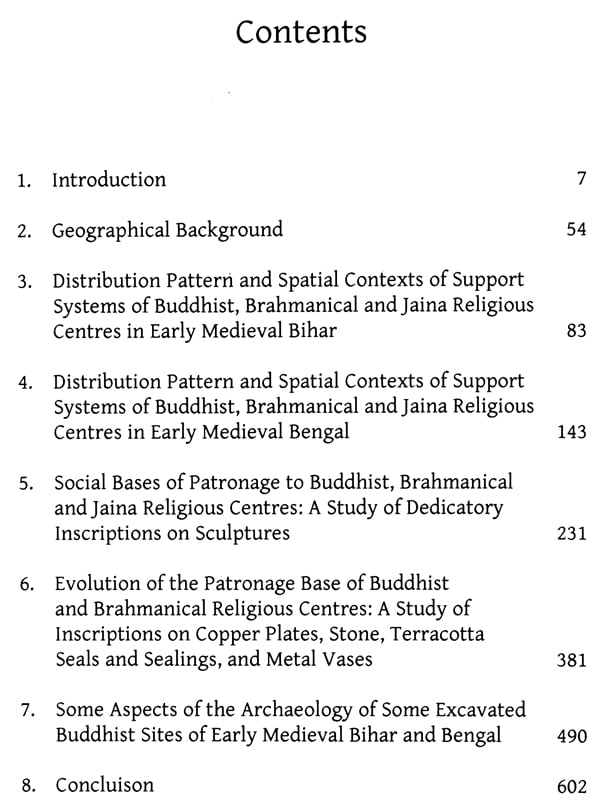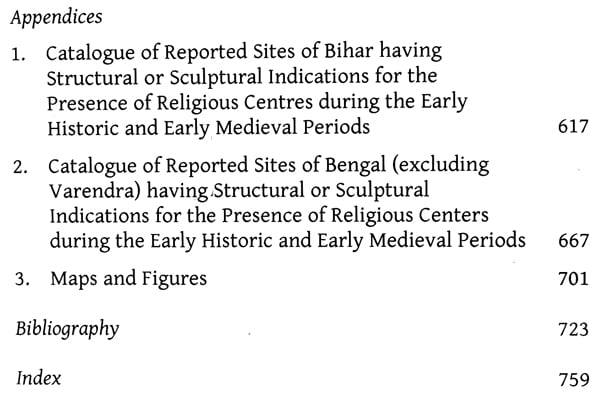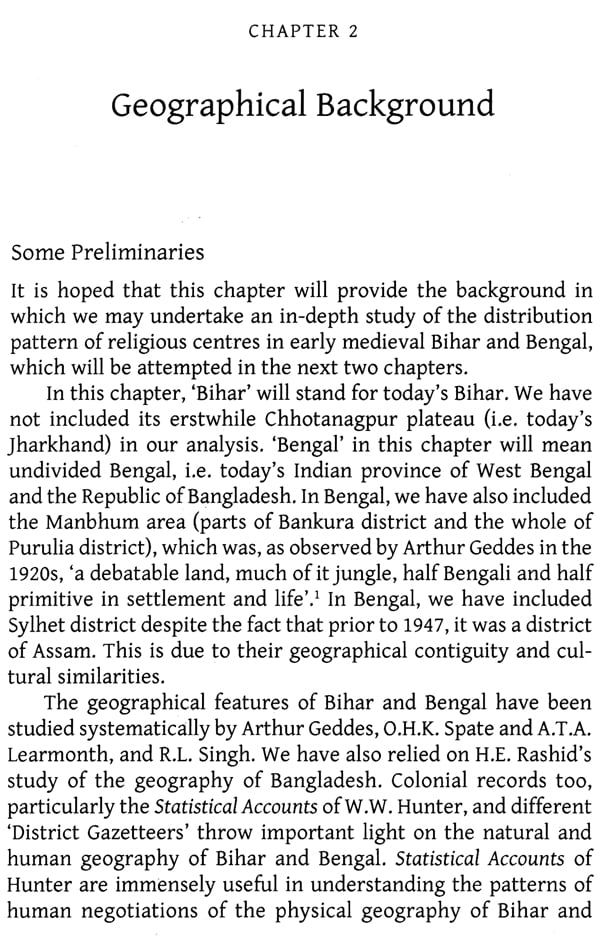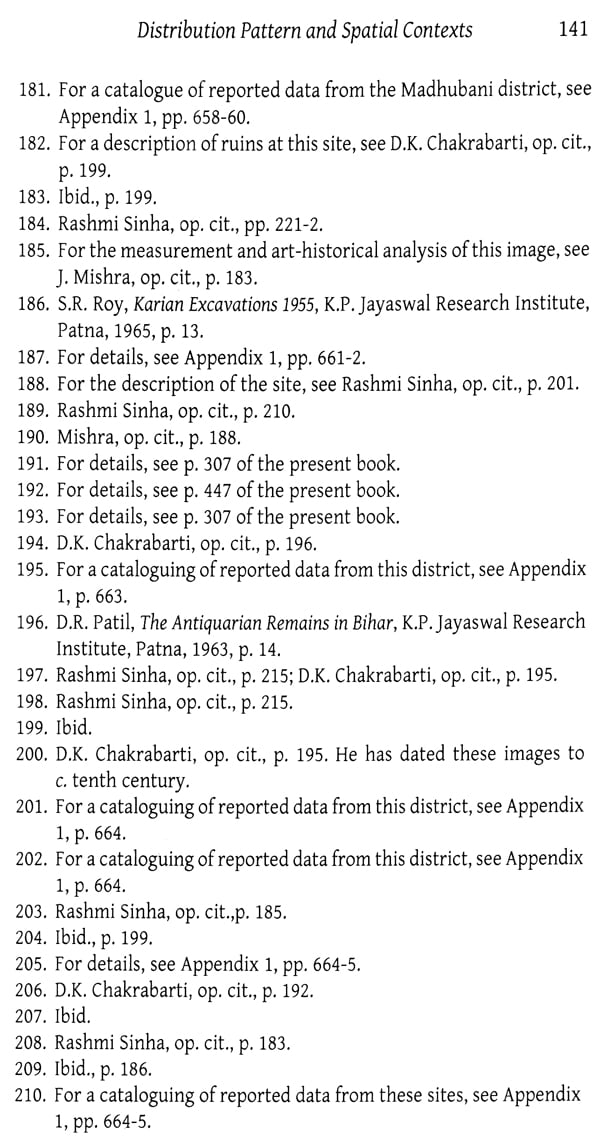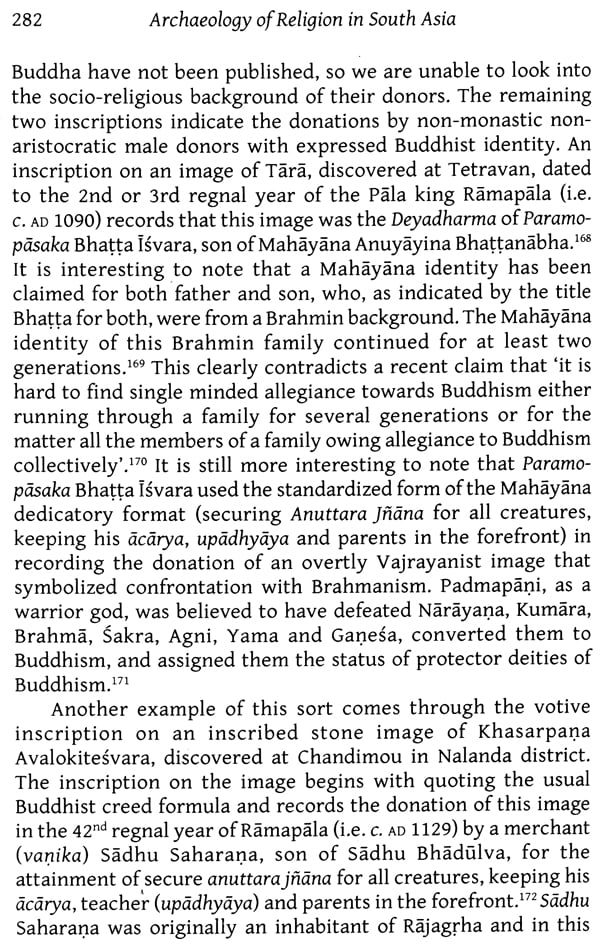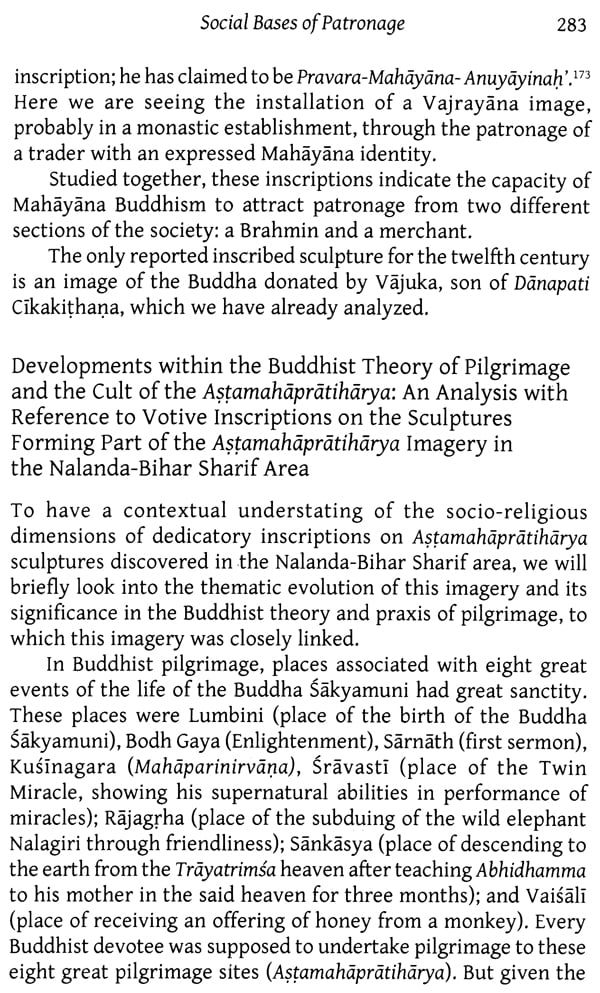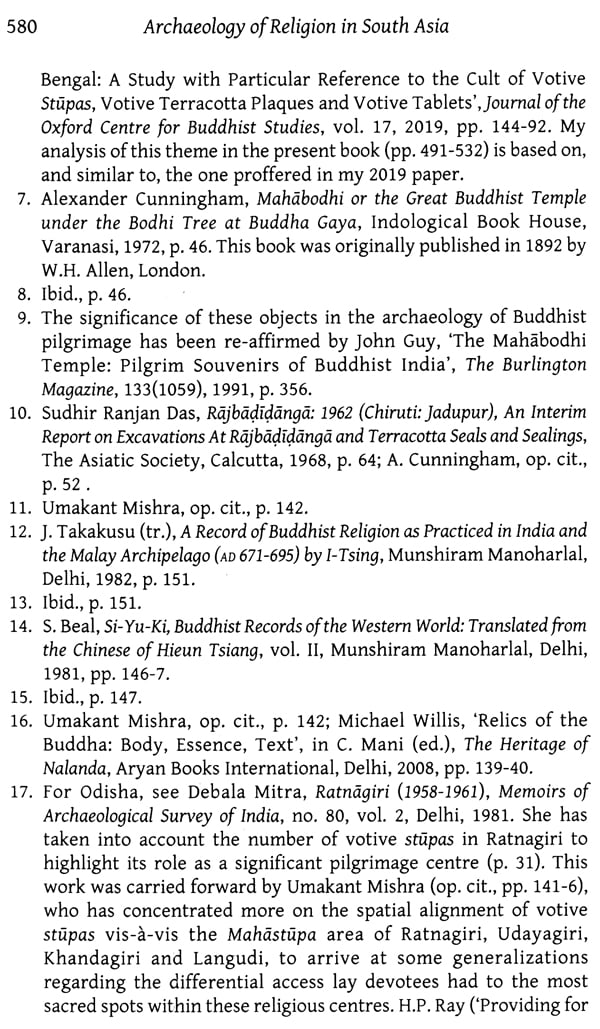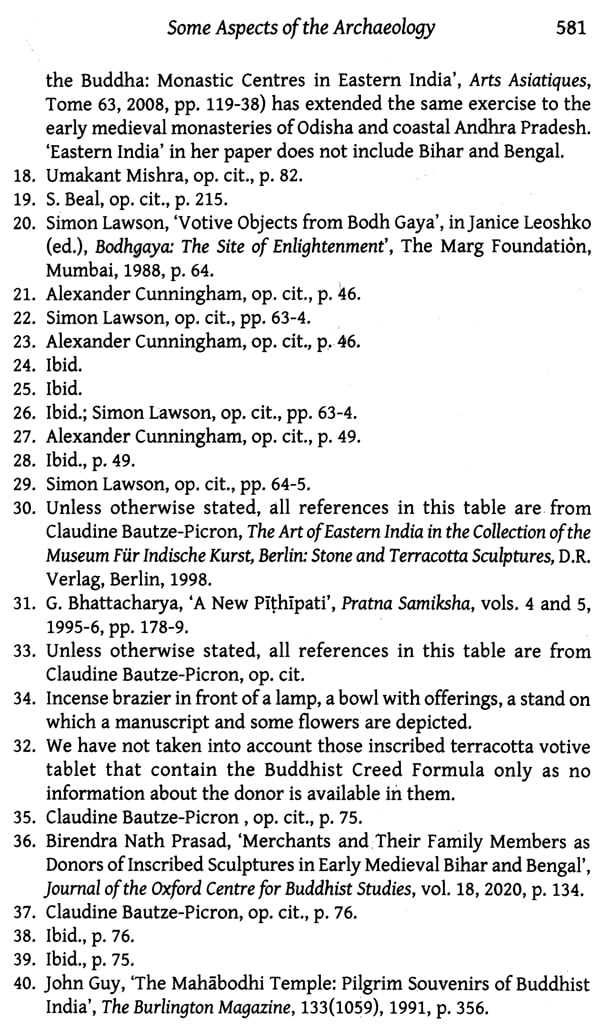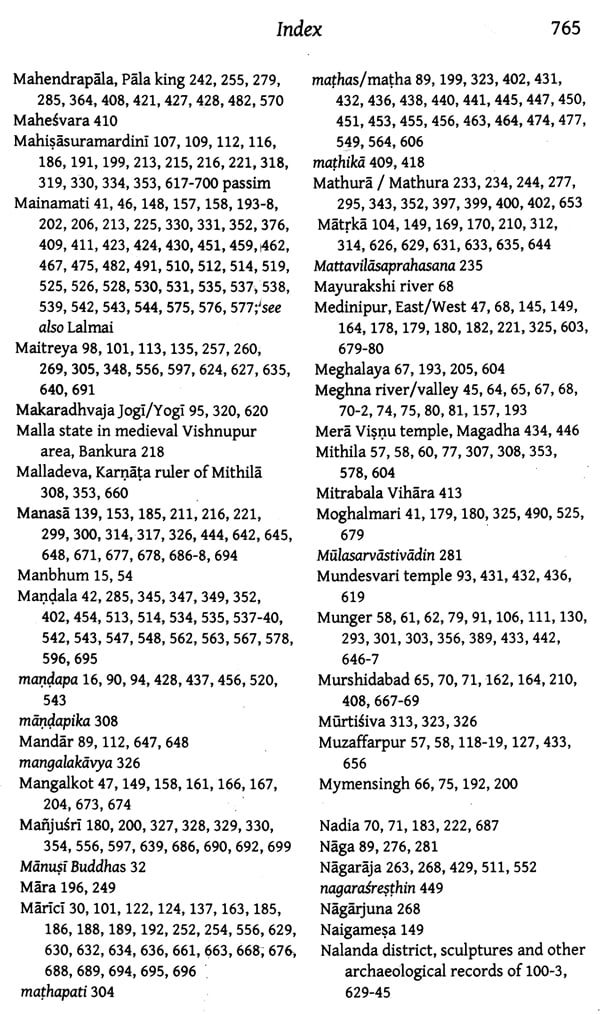
Archaeology of Religion in South Asia- Buddhist, Brahmanical and Jaina Religious Centers in Bihar and Bengal, C. AD 600-1200
Book Specification
| Item Code: | NAZ892 |
| Author: | Birendra Nath Prasad |
| Publisher: | Manohar Publishers and Distributors |
| Language: | English |
| Edition: | 2021 |
| ISBN: | 9788194991281 |
| Pages: | 770 |
| Cover: | HARDCOVER |
| Other Details | 9.00 X 6.00 inch |
| Weight | 1.66 kg |
Book Description
Religion is something which people not only contemplate and philosophize about, but also something they actually 'do'.' The act of 'doing' religion by people, in many instances, includes making images of the deities in durable material; constructing shrines/temples for such deities; making pilgrimages to shrines/ temples/monasteries; dedicating material resources for arranging for their worship on a sustained basis; and leaving a permanent record of their patronage in the form of epigraphic records. To summarize, 'doing' religion by people often leaves important material traces in the form of archaeological records and imparts a certain degree of materiality to abstract religious thoughts. These archaeological records often provide important database to reconstruct some aspects of the religious practices and processes of the past. A study of the religious processes and practices of the past through an analysis of archaeological data may confirm, complement or contradict the existing text-based studies.
Through an analysis of the published data, this work attempts an archaeological history of religious centers in early medieval (c. AD 600-1200) Bihar and Bengal. The area of study of this work consists of the Indian provinces of Bihar and West Bengal, and the Republic of Bangladesh. 'Religious centers’ in this work stand for Brahmanical, Buddhist and laina temples and shrines, as well as for Buddhist stupas and monasteries. The focus will be on Buddhist religious centers.
The intention is to study not only those religious centers whose structural remains have been found in archaeological explorations and excavations, but also those religious centers whose past existence is indicated by the presence of loose stone sculptures.' By an 'archaeological history' of religious centers in early medieval Bihar and Bengal, it is basically intended to analyze the following issues:
(a) The archaeological context of the area in which religious centers emerged, functioned and declined;
(b) The archaeological data left behind by the religious centers with particular reference to their support systems and pat- terns of engagements with their devotees; and
(c) The ritual and cultic developments taking place within the religious centers as discernible in the archaeological data.
The first section will try to analyze how did religious centers interact with the social-economic and cultic processes in the locale in which they emerged, functioned and declined. In the second and third sections, main emphasis is on tracing the dialogues taking place within the religious centers, but here too, the emphasis has been on analyzing the social history of these developments.
So far, the focus has been generally on a single religious system of either Bihar or Bengal, generally from an art-historical perspective. A better approach may be to study religious centers as important elements of the overall social matrix, as institutions in dynamic interaction with other societal institutions and processes, acting and reacting with them, influencing them and getting influenced by them in turn. In the earlier reconstructions of social history of these religious centers, emphasis has been on literary sources, and insight from archaeological data has been largely neglected. This is despite the emphasizing of the need to correlate literary and archaeological data by many historians.
R.S Sharma, for example, has emphasized the need to 'marry' history and archaeology for a proper understanding of religious processes of the past.' In the case of early medieval Bihar and Bengal, this remains a sad desideratum.
Book's Contents and Sample Pages
